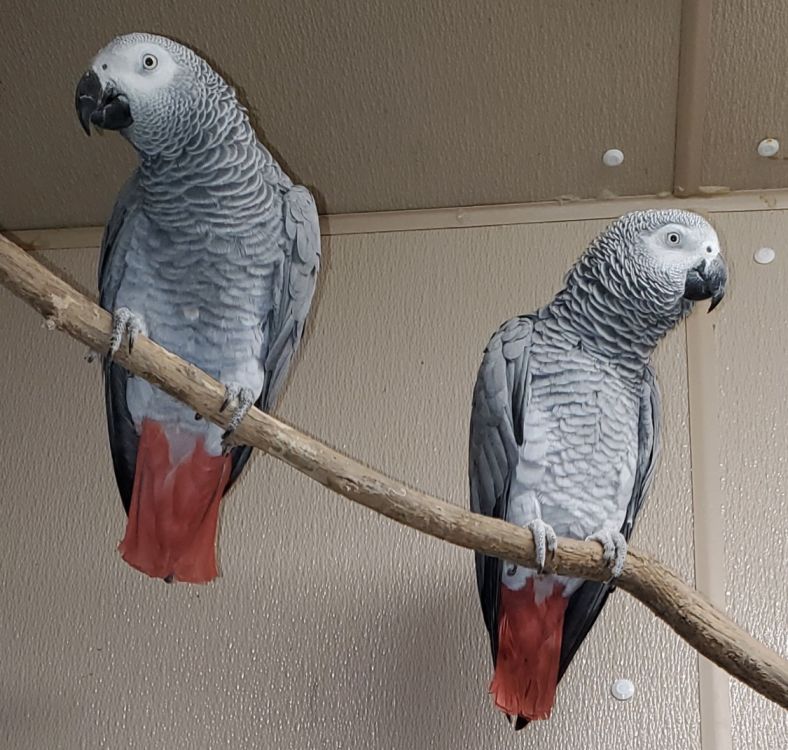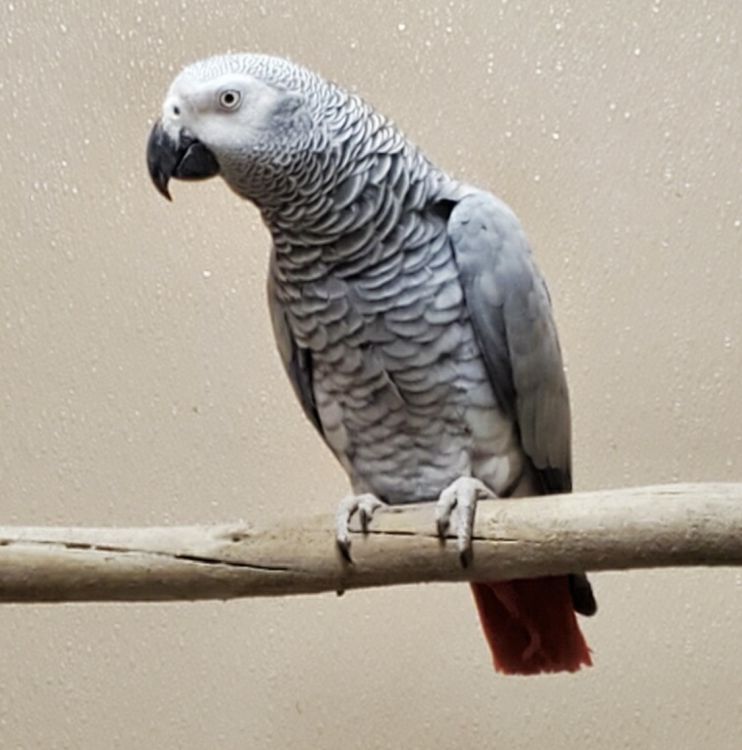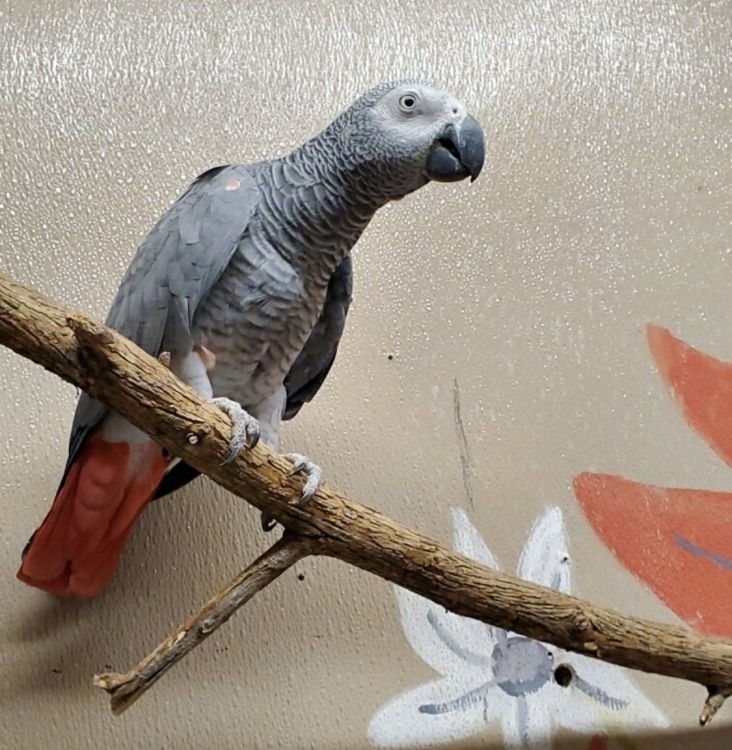African Gray Parrot
As our guests stroll through the beautiful outdoor exhibits of the Ark Encounter, they may suddenly be surprised to hear their phones ring. But when they go to investigate, no one is calling! Others may be confused when they hear what sounds like a space battle with lasers, while some are startled with a loud “hey girl” or “woo!” Occasionally guests think they are in the way of a reversing dump truck and turn around to find nothing there except two gray parrots with innocent expressions.
Those odd sounds aren’t in their imaginations—it’s our two African gray parrots, Adriel and Elizabeth! They’ve learned to mimic the sounds they hear and enjoy watching people’s reactions. This species is native to the savannahs, woodlands, and rainforests of equatorial Africa. Although they are named for their soft gray coloration, their tail feathers are bright red. Adriel has a few red feathers on her legs and wings, making her and Elizabeth easy to tell apart. A few African grays have a mutation (a change to their DNA) that turns them solid red!
These plant-eating parrots are often considered the most intelligent animals in the world. Not only can they mimic hundreds of voices and sounds, but they can learn up to 1,500 words and form complete sentences with correct tense and context. They can learn different colors, materials, objects, and shapes. They can count, do simple math, and reason. African grays are also the first birds to pass a test where they must understand that another animal needs assistance and offer help. Finally, they are self-aware, which means when one looks into a mirror, it recognizes that the bird looking back is itself.
Because they are so smart, African gray parrots have been kept by people as pets as far back as biblical times! However, extreme caution should be taken before adopting one. Adriel and Elizabeth are rescues. Many people give up their parrots when they realize they can live over 80 years, require large spaces, make huge messes, scream all day, bite really hard, have complicated needs, and demand constant entertainment. Sadly, African gray parrots are endangered because about 20% of the wild population was being harvested every year to sell as pets until protections were put in place. Over two-thirds of the birds harvested died before reaching their destinations, and many survivors ended up in rescues when their owners realized they were very difficult pets to keep.
Of course, as smart as African gray parrots are, they will never be as intelligent as humans. God gave parrots the smarts they need to survive in their environments because he cares for his creatures. But they will never design rocket ships or cure diseases. God tells us in Genesis that only humans were made in his image and are therefore capable of that kind of intelligence (Genesis 1:26–27). If God cares so much for animals, imagine how much he cares for you, his image-bearers!
Are not two sparrows sold for a penny? And not one of them will fall to the ground apart from your Father. But even the hairs on your head are all numbered. Fear not, therefore; you are of more value than many sparrows. (Matthew 10:29–31)
- © 2024 Answers in Genesis
- Privacy Policy
- Contact
- About




